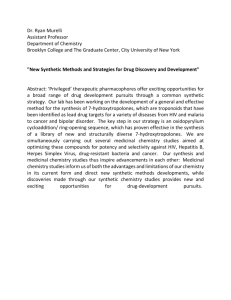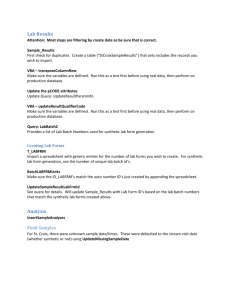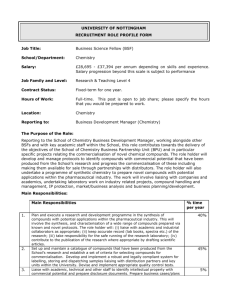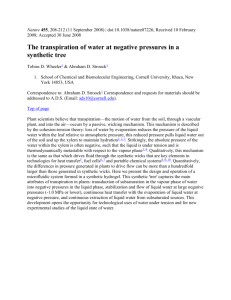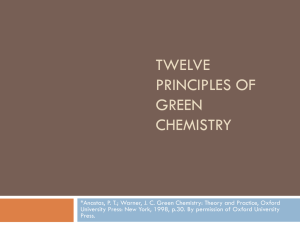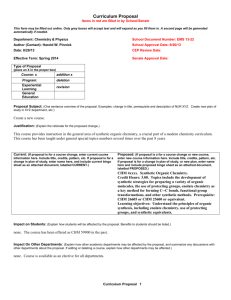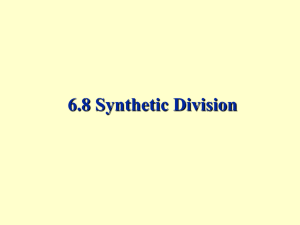Charles O. Esimone1, Damian C. Odimegwu2,3 and Kenneth G
advertisement
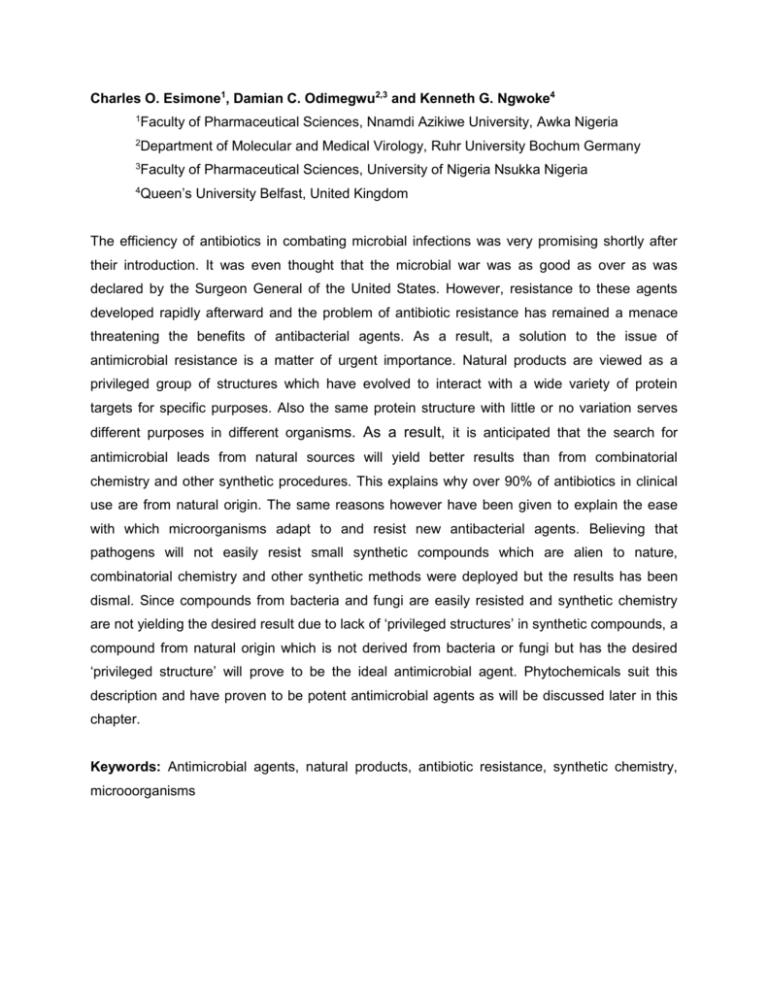
Charles O. Esimone1, Damian C. Odimegwu2,3 and Kenneth G. Ngwoke4 1 Faculty of Pharmaceutical Sciences, Nnamdi Azikiwe University, Awka Nigeria 2 Department of Molecular and Medical Virology, Ruhr University Bochum Germany 3 Faculty of Pharmaceutical Sciences, University of Nigeria Nsukka Nigeria Queen’s University Belfast, United Kingdom 4 The efficiency of antibiotics in combating microbial infections was very promising shortly after their introduction. It was even thought that the microbial war was as good as over as was declared by the Surgeon General of the United States. However, resistance to these agents developed rapidly afterward and the problem of antibiotic resistance has remained a menace threatening the benefits of antibacterial agents. As a result, a solution to the issue of antimicrobial resistance is a matter of urgent importance. Natural products are viewed as a privileged group of structures which have evolved to interact with a wide variety of protein targets for specific purposes. Also the same protein structure with little or no variation serves different purposes in different organisms. As a result, it is anticipated that the search for antimicrobial leads from natural sources will yield better results than from combinatorial chemistry and other synthetic procedures. This explains why over 90% of antibiotics in clinical use are from natural origin. The same reasons however have been given to explain the ease with which microorganisms adapt to and resist new antibacterial agents. Believing that pathogens will not easily resist small synthetic compounds which are alien to nature, combinatorial chemistry and other synthetic methods were deployed but the results has been dismal. Since compounds from bacteria and fungi are easily resisted and synthetic chemistry are not yielding the desired result due to lack of ‘privileged structures’ in synthetic compounds, a compound from natural origin which is not derived from bacteria or fungi but has the desired ‘privileged structure’ will prove to be the ideal antimicrobial agent. Phytochemicals suit this description and have proven to be potent antimicrobial agents as will be discussed later in this chapter. Keywords: Antimicrobial agents, natural products, antibiotic resistance, synthetic chemistry, microoorganisms
